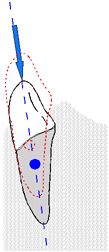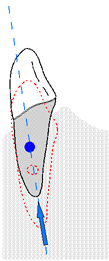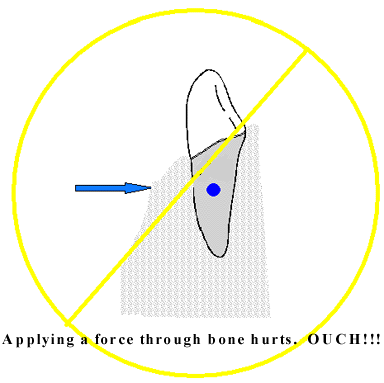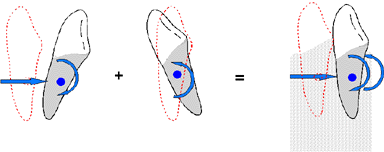

|
|
|
Translation occurs when a force is applied through the center of resistance (CR) of a tooth. Translation is pure bodily movement with no rotational component. Intrusion: Translation into bone
Extrusion: Translation out of bone
The fact that teeth are embedded in bone in the mouth makes sideways translation of a tooth difficult. What would you do if you wanted to translate a tooth to the right? To apply a force directly through the CR is impossible. You do not have direct access to CR, because it is within the bone.
Orthodontists have circumvented this problem by utilizing a counterbalancing couple (CBC) with a moment equal to and opposite in direction to the moment created by a single force acting on the tooth. CBC allows you to negate the rotational component of tipping and produce pure translation. Recall that translation using a CBC is one method of controlled tipping.
Last Update: August 18,1998 Please direct questions and comments about this page to appl@net.chem.unc.edu Designed in cooperation with The Shodor Education Foundation, Inc. © Copyright 1998 The University of North Carolina at Chapel Hill |




